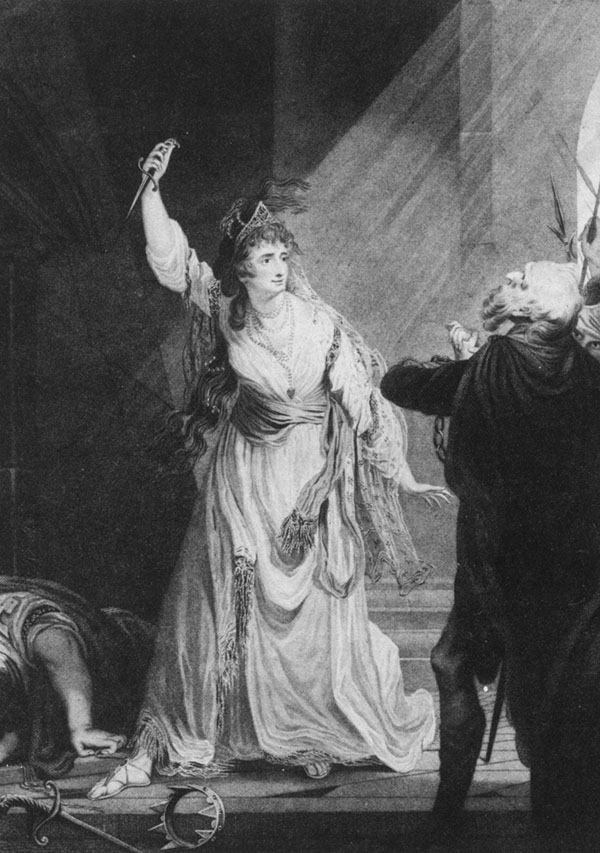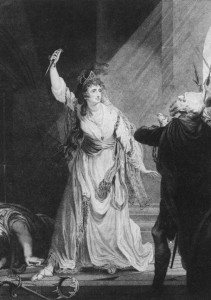

Sarah Siddons was born in Wales in 1755. She became one of the most prominent actresses of the 18th century, famous in particular for playing Lady Macbeth. She remains notable and memorable even today. The Sarah Siddons Society in Chicago presents theatre scholarships in her name annually.
“On Sunday, Mrs. Siddons, about whom all the world has been talking, exposed her beautiful, adamantine, soft, and lovely person, for the first time at Smock Alley Theatre in the bewitching, melting, and all tearful character of Isabella.
From the repeated panegyrics of the impartial London newspapers, we were taught to expect the sight of a heavenly angel, but how were we supernaturally surprised into almost awful joy at beholding a mortal goddess!
The house was crowded with hundreds more than it could hold, with thousands of admiring spectators who went away without a sight.
This extraordinary phenomenon of tragic excellence! this star of Melpomene! this comet of the stage! this sun of the firmament of Muses! this moon of blank verse! this queen and princess of tears! this Donellan of the poisoned dagger! this empress of pistol and dagger! this chaos of Shakespeare! this world of weeping clouds! this Juno commanding aspects! this Terpsichore of the curtains and scenic! this Proserpine of fire and excitement! this Katterfelto of wonders! exceeded expectation, went beyond belief and soared above all the natural powers of description! She was nature itself! She was the most exquisite work of art!
She was the very daisy, primrose, tuberose, sweet brier, furze blossom, gilliflower wall flower, cauliflower, auricula, and rosemary! In short, she was the bouquet of Parnassus! When expectations were so high, it was thought she would be injured by her appearance, but it was the audience who were injured: several fainted before the curtain drew up!
When she came to the scene of parting with her wedding ring, ah! what a sight was there! the very fiddlers in the orchestra, albeit unused to melting mood, blubbered like hungry children crying for their bread and butter! and when the bell rang for music between the acts the tears ran from the bassoon players’ eyes in such plentiful showers that they choked the finger stops, and making a spout of the instrument poured in such torrents on the first fiddler’s book that not seeing the overture was in two sharps, the leader of the band played it in one flat.
But the sobs and sighs of the groaning audience and the noise of corks drawn from smelling bottles prevented the mistakes between sharps and flats being heard. One hundred and nine ladies fainted! forty-six went into fits! and ninety-five had strong hysterics.
The world will scarcely credit the truth when they are told that fourteen children, five old men, one hundred tailors, and six common councilmen were actually drowned in the inundation of tears that flowed from the galleries, the slips, and the boxes, to increase the briny pond in the pit. The water was three feet deep. An Act of Parliament will certainly be passed against her playing any more!”
Source:
English As She Is Wrote: Showing Curious Ways in Which the English Language May Be Made to Convey Ideas or Obscure Them. A Companion to “English As She Is Spoke.”. New York: D. Appleton & co., 1883
View source here.
